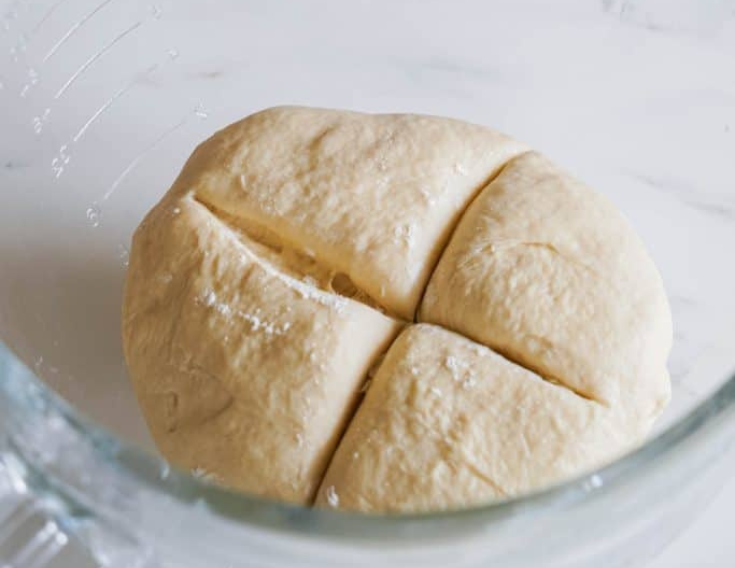How to Make French Croissants Introduction
Who can resist the allure of a freshly baked French croissant? These iconic pastries, with their golden, flaky layers and rich, buttery flavor, are a breakfast staple beloved around the world. While they might seem like a daunting challenge to make at home, the process is incredibly rewarding and worth every effort. In this guide, we’ll take you through each step of making authentic French croissants, ensuring you can enjoy this classic treat straight from your own oven. Get ready to impress your family and friends with your newfound pastry skills!
History of French Croissants

The croissant, often associated with France, actually has a fascinating origin story that dates back to Austria. The kipferl, an Austrian pastry, is considered the precursor to the croissant. It wasn’t until the 19th century that the croissant as we know it today was popularized in France. Since then, it has become a beloved breakfast item around the world.
Essential Tools for Making French Croissants
- Mixing bowls
- Rolling pin
- Bench scraper
- Pastry brush
- Baking sheet
- Parchment paper
- Plastic wrap
Variations of French Croissants
- Pain au Chocolat: Fill the croissants with chocolate before rolling them up.
- Almond Croissants: Fill and top the croissants with almond paste and sliced almonds.
- Savory Croissants: Add cheese, ham, or other savory fillings.
Types of Croissants
Croissants are a beloved pastry known for their flaky, buttery layers and delicate texture. Here are some popular types of croissants:
- Plain Croissant: The classic version, made with layers of dough and butter, baked to a golden brown.
- Chocolate Croissant (Pain au Chocolat): A croissant with a bar of dark chocolate baked inside, providing a rich, sweet filling.
- Almond Croissant: A croissant filled with almond paste or frangipane, often topped with sliced almonds and powdered sugar.
- Ham and Cheese Croissant: A savory version, filled with slices of ham and cheese, perfect for breakfast or a light lunch.
- Butter Croissant: Similar to the plain croissant, but with an extra emphasis on the rich, buttery flavor.
- Croissant aux Amandes et Chocolat: A combination of almond and chocolate croissants, filled with both almond paste and chocolate.
- Fruit-filled Croissant: These croissants are filled with various fruit preserves like raspberry, apricot, or apple, offering a sweet and tangy taste.
- Spinach and Cheese Croissant: Another savory option, filled with spinach and cheese, often feta or ricotta.
- Whole Wheat Croissant: Made with whole wheat flour, this version offers a slightly healthier twist while maintaining the classic croissant texture.
- Mini Croissants: Smaller versions of the classic croissant, perfect for parties or as a light snack.
Health Benefits of Croissants
Nutritional Profile of Croissants
- Energy Source: High in calories, providing a quick and sustained energy boost, particularly beneficial for active lifestyles.
- Rich in Carbohydrates: Supplies the primary energy source for the body, aiding in maintaining alertness and activity levels.
- Source of Protein: Contributes to daily protein intake, essential for tissue building and repair.
- Healthy Fats: Contains unsaturated fats from butter, important for brain health, hormone production, and absorption of fat-soluble vitamins.
- Vitamins and Minerals:
- B Vitamins: Crucial for energy metabolism and brain function.
- Iron: Important for oxygen transport in the blood.
- Calcium: Essential for bone health.
Additional Health Benefits
- Boosting Mood and Mental Health: Carbohydrates in croissants can enhance mood by increasing serotonin production, and the enjoyment of eating them can contribute to overall mental well-being.
- Digestive Health: Whole-grain croissants offer dietary fiber, aiding in digestive health by regulating bowel movements and preventing constipation.
- Balanced Diet: When paired with nutrient-dense foods such as fruits, vegetables, and lean proteins, croissants can be part of a balanced meal.
Allergen Information
- Common Allergens: Typically contain gluten, dairy, and eggs. Look for gluten-free or vegan options if needed.

How to Make French Croissants
Dough
Butter Block
Egg Wash
Instructions
-
Preparing the Dough
Mixing Ingredients: In a large mixing bowl, combine the flour, sugar, yeast, and salt. Add in the warm milk and water, then mix until a dough forms.
Kneading the Dough: Transfer the dough to a floured surface and knead for about 10 minutes until smooth and elastic.
First Rise: Place the dough in a lightly oiled bowl, cover with plastic wrap, and let it rise in a warm place for 1-2 hours, or until it has doubled in size.
-
Laminating the Dough
Butter Block Preparation: While the dough is rising, prepare the butter block. Place the cold butter between two sheets of parchment paper and flatten it into a rectangle using a rolling pin.
Incorporating Butter into the Dough: Once the dough has risen, roll it out into a large rectangle. Place the butter block in the center and fold the dough over it like an envelope.
Folding and Turning: Roll the dough out into a rectangle, fold it into thirds, and turn it 90 degrees. Repeat this process three times, chilling the dough for 30 minutes between each turn.
-
Shaping the Croissants
Rolling Out the Dough: Roll the laminated dough out into a large rectangle, about 1/4 inch thick.
Cutting the Dough: Using a sharp knife or pizza cutter, cut the dough into triangles.
Shaping into Croissants: Starting from the wide end, roll each triangle up into a crescent shape. Place the croissants on a baking sheet lined with parchment paper.
-
Proofing the Croissants
Proofing is a crucial step that allows the croissants to rise and develop their signature layers. Place the shaped croissants in a warm, draft-free area and let them proof for about 1-2 hours, or until they have doubled in size.
-
Baking the Croissants
Preheat your oven to 375°F (190°C). Brush the croissants with an egg wash (a beaten egg mixed with a splash of water) to give them a beautiful golden color. Bake for 20-25 minutes, or until they are golden brown and crispy. Keep an eye on them to prevent overbaking.
-
Cooling and Serving
Once baked, let the croissants cool on a wire rack for about 10 minutes. Serve them warm with a cup of coffee or tea, or enjoy them plain. They are best enjoyed fresh but can be stored in an airtight container for a day or two.
Servings 6
- Amount Per Serving
- Calories 376kcal
- % Daily Value *
- Total Fat 23g36%
- Saturated Fat 14g70%
- Cholesterol 61mg21%
- Sodium 527mg22%
- Potassium 73mg3%
- Total Carbohydrate 37g13%
- Dietary Fiber 1g4%
- Sugars 2g
- Protein 5g10%
- Vitamin A 710 IU
- Calcium 28 mg
- Iron 2 mg
* Percent Daily Values are based on a 2,000 calorie diet. Your daily value may be higher or lower depending on your calorie needs.
Note
Ingredients and Preparation
- Quality Ingredients: Use high-quality butter, flour, and milk.
- Butter: European-style butter with higher fat content is ideal.
- Temperature Control: Keep ingredients and dough cool during preparation.
- Resting Time: Allow dough to rest in the refrigerator between folds.
Dough Lamination
- Laminating Process: Fold and roll the dough multiple times for thin layers.
- Butter Block: Ensure even distribution of the butter block.
- Folding Technique: Use the letter fold (three-fold) technique.
Shaping and Proofing
- Cutting the Dough: Cut into triangles with sharp edges.
- Shaping: Roll from the wide end to the tip, tucking the tip under.
- Proofing: Proof until the croissants have doubled in size.
Baking
- Egg Wash: Brush with an egg wash for a shiny, golden crust.
- Oven Temperature: Preheat to around 375°F (190°C).
- Baking Time: Bake until golden brown and crisp.
Storage and Serving
- Cooling: Cool on a wire rack to maintain crispness.
- Storage: Store in an airtight container at room temperature for up to two days, or freeze for longer storage.
- Serving Suggestions: Serve plain or with jam, honey, or chocolate spread.
Common Mistakes to Avoid
- Overproofing: Can cause croissants to collapse during baking.
- Underproofing: Results in a dense, doughy texture.
- Incorrect Butter Temperature: Too cold butter can break, too warm butter can melt into the dough.








